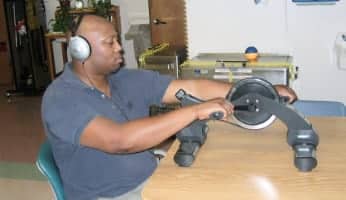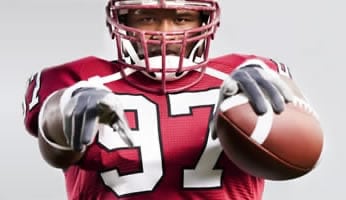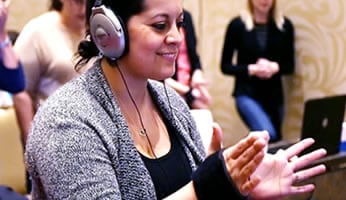Featured in the News: After serious head injury, Dover principal spreads awareness about concussions

Home - Testimonials - Adult Testimonials - Featured in the News: After serious head injury, Dover principal spreads awareness about concussions

Principal Julie Sterner’s injury impaired her ability to read and multitask after falling in a bounce house. She said therapy helped her become herself again.
York, PA – Last summer, Julie Sterner broke down in the ice-cream aisle at a grocery store.
She couldn’t remember what she wanted to buy. The bright lights, people and choices were too much for her mind to handle. She felt overwhelmed and panicked.
“I didn’t know how to get out,” Sterner said.
In April, the 33-year-old fell in an inflatable bounce house during a Dover Area Senior High School event.
Sterner — principal at Dover Intermediate School — hooked up to an elastic cord to race a student. She lay on the inflated floor after she slipped and the band snapped her body backward to the ground. She felt groggy as pain circled her head. She thought she was OK, so she went home and slept. She awoke the next day with a headache and felt fatigued.
“I had no idea who I was or where I was,” Sterner said
 After suffering a severe concussion, Julie Sterner, 33, of Conewago Township underwent physical and speech therapy from May through November at HealthSouth Rehabilitation Hospital of York.
After suffering a severe concussion, Julie Sterner, 33, of Conewago Township underwent physical and speech therapy from May through November at HealthSouth Rehabilitation Hospital of York.
Speech language pathologist Heather Barr gave Sterner cognitive challenges to push her brain’s endurance. Therapy included attention-training and word-retrieval exercises, and memory-building activities.
Sterner went to therapy three times a week. Over time, her sessions became less frequent.
She felt frustrated with her mental limitations and worried that she wouldn’t be able to communicate effectively at work. She became anxious, and she imagined herself appearing incompetent in front of teachers, parents and students.
“I was in trouble as far as being able to do my job,” she said.
Barr gave Sterner cognitive challenges to push her brain’s endurance. She set up a makeshift office for role-playing and had Sterner use an evaluation and treatment tool called Interactive Metronome.
To use the computer, a patient wears headphones and hand and foot triggers. When a patient hears a cowbell, she must hit the hand trigger at the same time as the cowbell, which helps work on the brain’s timing and synchronicity.
Multiple stimuli are incorporated to make the exercise more of a multitasking-information exchange.
When she first met Sterner, Barr said, Sterner was expressionless, and her eyes were glazed over. She could tell Sterner’s thinking wasn’t smooth.
“She was just unraveling,” Barr said.
Sterner has made a full recovery — except she can no longer remember the names of all 600 of her students. Barr said Sterner might never be able to do that again. She’s OK with that.







